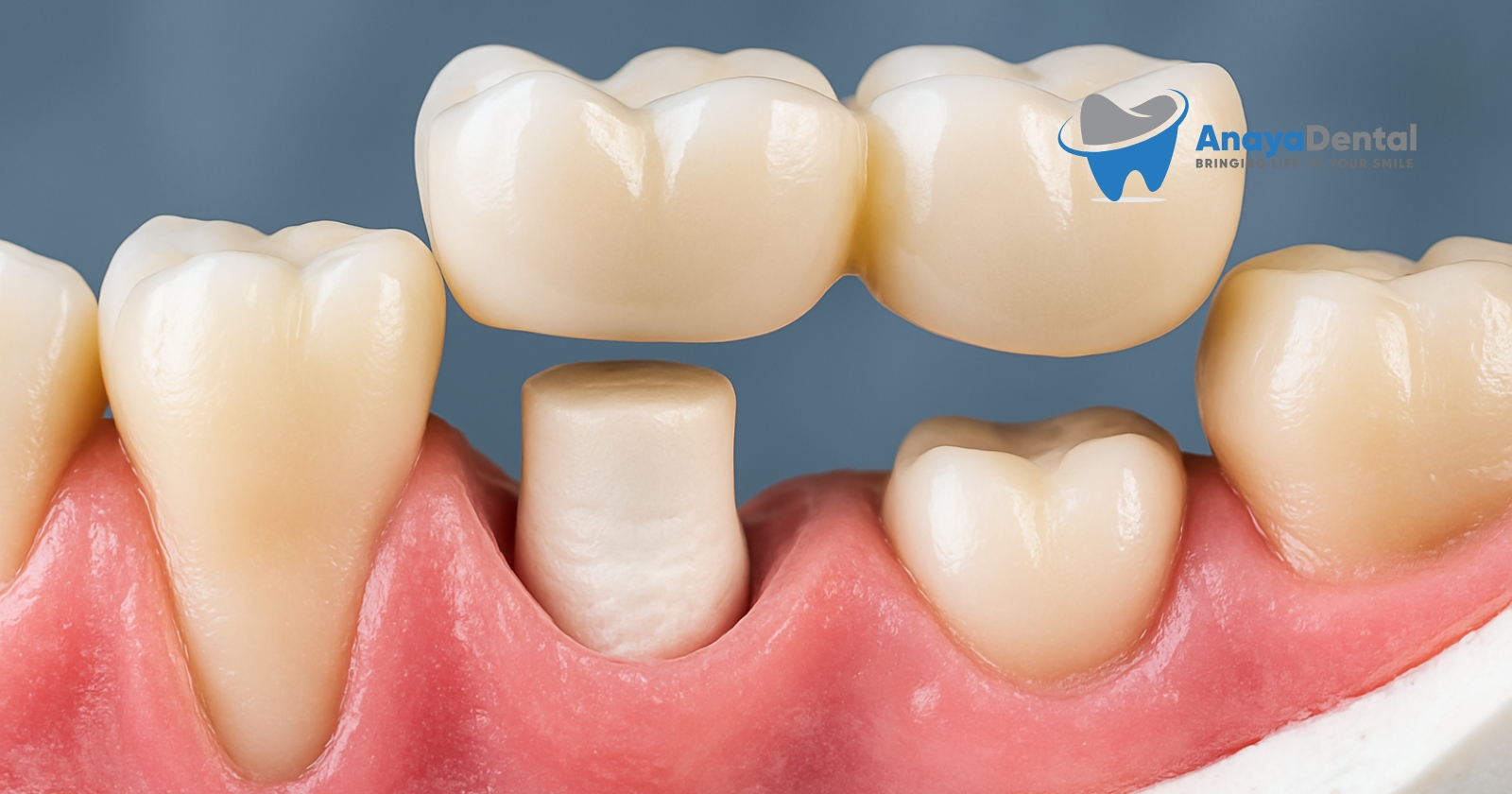What Is a D2390 Resin-Based Composite Crown?
When your front tooth needs significant restoration, your dentist might recommend a D2390 procedure – the dental code for an anterior resin-based composite crown. This treatment offers both structural support and aesthetic benefits for damaged front teeth.
A resin-based composite crown covers the entire visible portion of your tooth with a durable, tooth-colored material made from a mixture of plastic and fine glass particles. Unlike traditional crowns that require laboratory fabrication, these restorations are typically completed in a single dental visit.
When You Might Need an Anterior Composite Crown
Your dentist may suggest a D2390 procedure when:
Try Our Dental Calculators
- Your front tooth has extensive decay that’s too large for a standard filling
- You have a fractured or broken anterior tooth
- Your tooth has significant discoloration that doesn’t respond to whitening
- You need to improve the shape or alignment of a front tooth
- A previous restoration has failed or become damaged
According to the American Dental Association, approximately 37% of adults aged 35-44 have had some form of anterior tooth restoration, highlighting the common nature of these procedures.
The D2390 Procedure Explained
Understanding what happens during this dental procedure can help alleviate concerns:
1. Preparation
Your dentist will:
- Examine your tooth and possibly take X-rays
- Administer local anesthetic to ensure comfort
- Remove any decay and damaged tooth structure
- Shape the remaining tooth to properly support the crown
2. Composite Application
Unlike traditional crowns, your dentist will:
- Apply the composite resin material directly to your tooth in layers
- Shape the material to match your natural tooth anatomy
- Use a special light to harden (cure) each layer
- Continue building up layers until the crown is complete
3. Finishing
The final steps include:
- Sculpting and polishing the composite to match adjacent teeth
- Checking your bite alignment
- Making final adjustments for comfort and appearance
Average Costs for D2390 Procedures
The cost of a resin-based composite crown varies based on several factors:
| Factor | Impact on Cost |
|---|---|
| Geographic location | Urban areas typically cost 15-30% more |
| Dentist’s experience | Specialists may charge premium rates |
| Additional procedures needed | Root canals, posts, etc. add to total cost |
| Material quality | Higher-grade composites increase durability and cost |
On average, you can expect to pay $800-$1,500 for a D2390 resin-based composite crown. This represents a middle-ground option between less expensive fillings and more costly porcelain crowns.
Insurance Coverage and Payment Options
Insurance Coverage
Most dental insurance plans provide partial coverage for D2390 procedures, typically categorizing them as “major restorative” treatments. Standard coverage patterns include:
- 50-80% coverage after meeting your deductible
- Annual maximums of $1,000-$1,500 may limit benefits
- Waiting periods of 6-12 months for new insurance plans
- Possible frequency limitations (e.g., one crown per tooth every 5-7 years)
Always verify your specific benefits with your insurance provider before treatment.
Alternative Payment Options
If insurance doesn’t fully cover your needs, consider these options:
- Dental discount plans can reduce costs by 15-50%
- Care credit or dental financing allows for monthly payments
- Dental school clinics offer reduced rates (though treatment takes longer)
- Payment plans directly through your dental office
- Health Savings Accounts (HSAs) or Flexible Spending Accounts (FSAs) can be used for dental expenses
Advantages and Disadvantages of Resin-Based Composite Crowns
Advantages
- Completed in a single visit – no temporary crown needed
- Preserves more natural tooth structure compared to traditional crowns
- Easily repaired if chipped or damaged
- Matches natural tooth color for excellent aesthetics
- Lower initial cost than porcelain or ceramic alternatives
Disadvantages
- Less durable than traditional crowns (5-7 year average lifespan)
- May stain over time from coffee, tea, or tobacco
- Not ideal for patients with heavy bite forces or grinding habits
- Limited strength compared to metal or ceramic crowns
- Requires skilled application technique for optimal results
Maintaining Your Composite Crown
To maximize the lifespan of your anterior composite crown:
- Brush twice daily with a non-abrasive toothpaste
- Floss daily around the crown area
- Avoid biting hard objects like ice, pens, or fingernails
- Consider wearing a nightguard if you grind your teeth
- Schedule regular dental checkups every 6 months
- Limit staining foods and beverages like coffee, red wine, and berries
Alternative Treatment Options
A D2390 resin-based composite crown isn’t your only option. Consider these alternatives:
- Traditional porcelain crown (D2740) – more durable but requires multiple visits
- Porcelain-fused-to-metal crown (D2750) – stronger but less aesthetic
- Veneer (D2960) – covers only the front surface, less invasive
- Large composite filling (D2330-D2335) – less expensive but less protective
Quick Review
A D2390 resin-based composite crown provides a direct restoration option for damaged anterior teeth. The procedure:
- Is completed in one office visit
- Costs approximately $800-$1,500
- Is typically covered at 50-80% by insurance
- Lasts an average of 5-7 years with proper care
- Offers excellent aesthetics with moderate durability
Consult with your dentist to determine if this restoration type is the right choice for your specific dental needs and circumstances.


